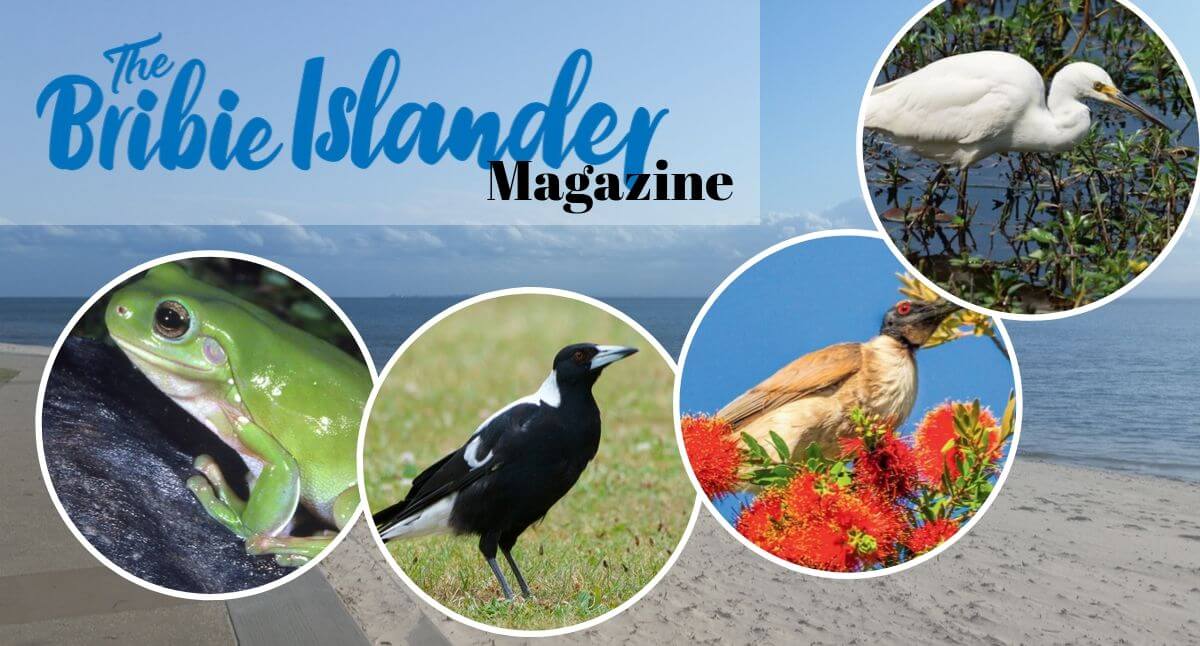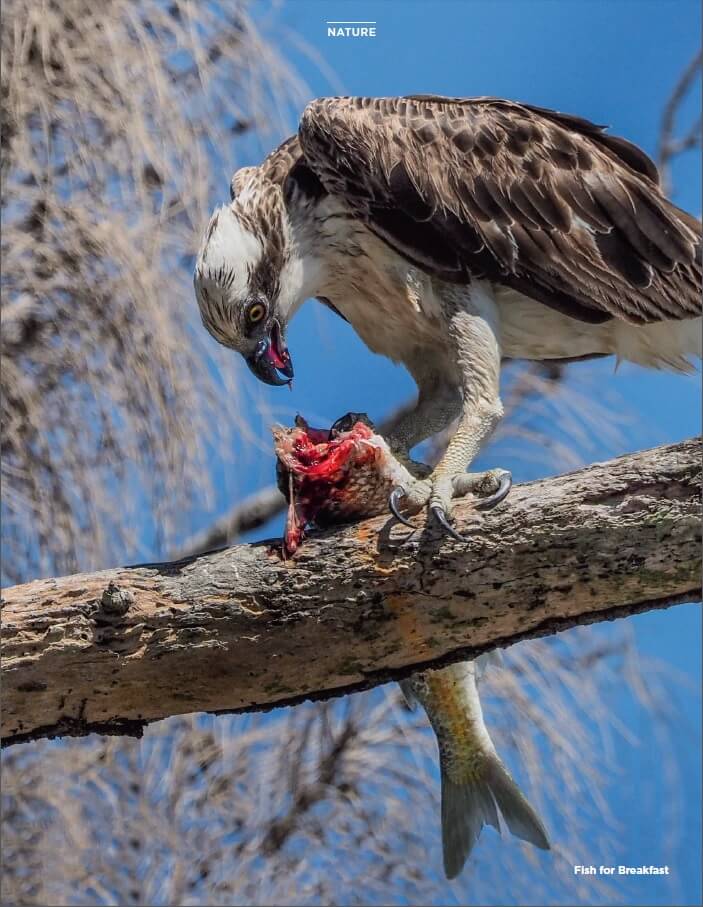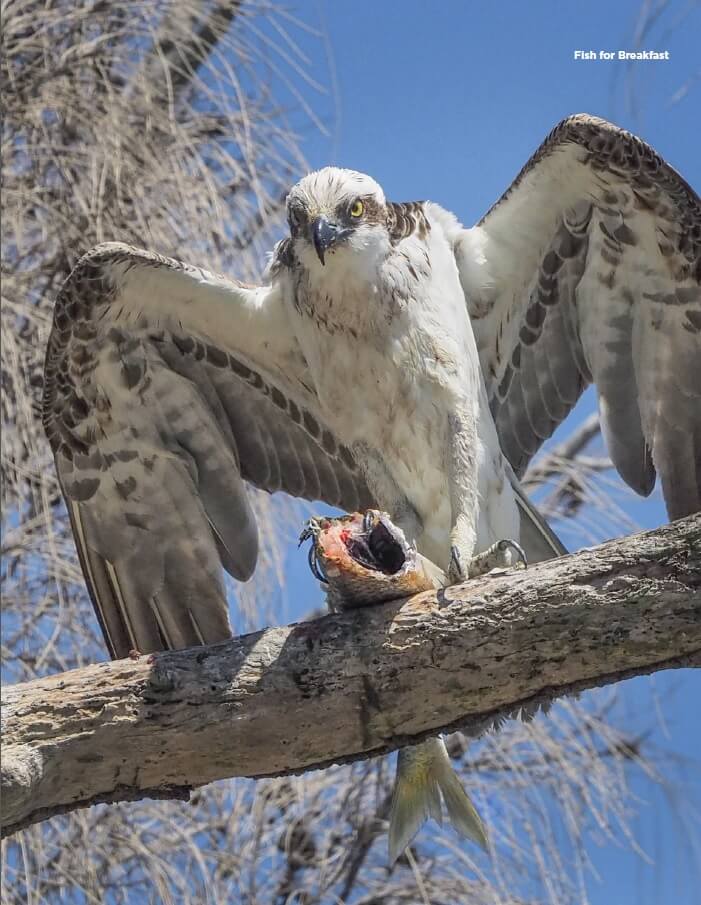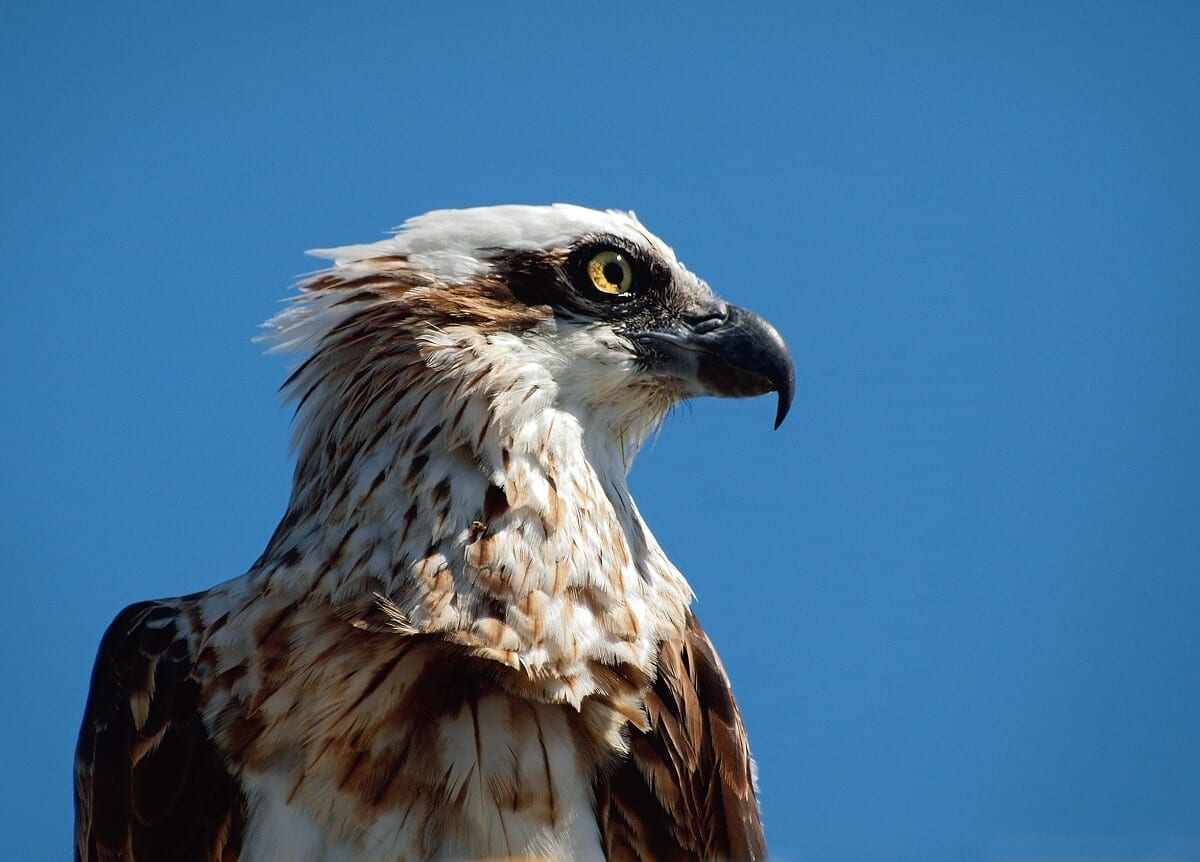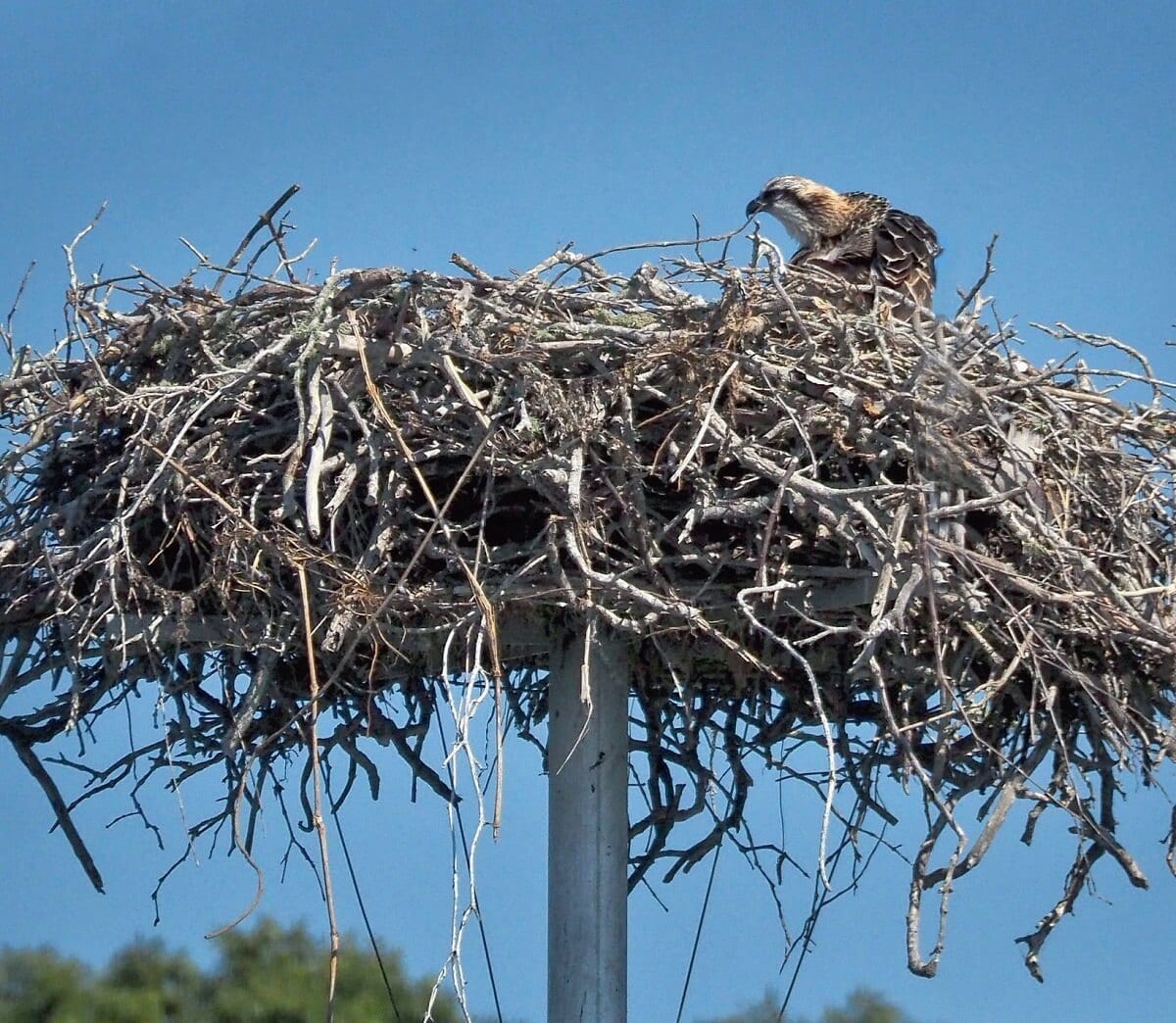Tags: Wildlife. native. Eastern Osprey. Pandion Cristatus. Birds. Australian. Queensland. Moreton Bay
A familiar sight on Bribie Island is the Eastern Osprey flying over the Pumicestone Passage and along the coastline at Woorim searching for food. Several large nests are found on the island and there are also nests that can be viewed from the road to Caboolture. Eastern Ospreys are large bicoloured fishing hawks which are quite a distinctive sight in flight or on a perch.
Females and males are similar to the females at 65 cm in length slightly larger than the males. Females weigh 1.2-1.6 kg with the males a little smaller. Inflight the wings with a span of 1.7 m move slowly with distinctive fingers showing at each wingtip. Short spiky crests are noticeable when they are perched usually in open areas. They have strong and hooked beaks which are used to tear their prey apart before eating.
Nostrils can be shut to keep the water out. Feathers are oily so that they do not become saturated while fishing. The mostly silent Ospreys are quite noisy during the breeding time making mournful whistling sounds. Lifespan is 7-10 years and occasionally a little longer. Their habitat is somewhere near the water in coastal areas, beaches and large waterholes. They do not venture far out to sea but will travel sometimes a few hundred kilometres inland if the feeding grounds are suitable.
They are mostly sedentary and not usually migratory. Eastern Ospreys are also found in the Philippines, Indonesia and PNG. 99% of their diet is fish. When hunting they soar at about 10-40 m in the air looking for food. Their eyesight is exceptionally good, and they can spot a fish from a great distance. They drop feet first with wings folded into the water and grab their prey in their strong, sharp claws then rise vertically from the surface with the fish firmly held.
Two of their toes are reversible which allows them to grip slippery fish with two claws in front and two behind. Usually, the fish are caught close to the surface, but Ospreys have been known to plunge as deep as a metre for their food. With the catch held firmly, they fly to a nearby perch to rip apart and pick mouth-sized bites and slowly devour the meal looking up for danger after almost every bite. It is important that their prey is not too large which would make it difficult to lift from the water. Sea snakes are sometimes eaten, and in the north, an occasional flying fox is on the menu.
Ospreys are monogamous and mostly stay together for life. Breeding depends a lot on climatic conditions and in SE Queensland it is usually around June-August. Nests are built in high trees, manmade structures and on cliff faces. Sticks, bark and other debris found in the vicinity make up an untidy nest. Both parent birds collect the materials, but it is the female that builds the nest. Nests are usually used year after year and each season more sticks added until in some cases the nest measures up to 2 m high and 2 m across. New nests are usually quite small.
2-3 brownish motley eggs are laid and incubated by the female for about 33 days. Males are the hunters and bring the fish to the female on the nest who breaks it up to feed the young. Chicks can eat 3-5 fish a day. When food is in short supply the first hatched and the strongest chick is most likely to survive. After about 50-60 days the babies are ready to leave the nest and then stay with their parents for 3-5 months. They then disperse and begin their breeding life at 3-4 years.
Their scientific name cristatus is derived from the Latin meaning “Crested”. Ospreys have been on earth for at least 11 million years and have evolved differently in some ways from other raptors. Unique to Ospreys are the reversible back toes and the closable nostrils. Conservation status of Eastern Ospreys is federally secure, vulnerable in NSW, rare in SA and not present in Victoria and Tasmania.
Ospreys have adapted somewhat to the human population in that they build on manmade structures and fish around populated areas. Rubbish in our waterways and abandoned fishing lines and hooks can be a problem for their wellbeing.
Other Articles
Australian Wildlife – Noisy FriarBird
